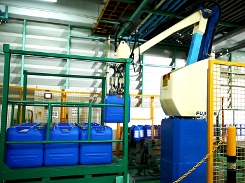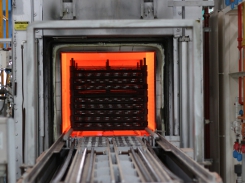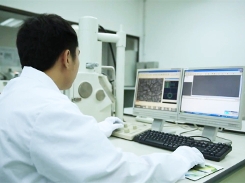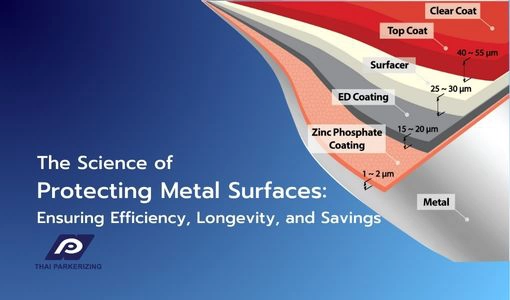- Corporate
- Chemical Products
- Chemical Controller
- Chemical for Paint Booth
- Coil Coating
- Degreasing and Cleaning chemical
- Heat&Cool exchanger (PLATECOIL)
- Hydrophilic
- Manganese Phosphate
- Nano-coating (Pallucid)
- Rolling Oil
- Rust Preventive Product
- Stearate Soap Lubricant/Dry-in-Place Lubricant (PULS)
- Trivalent Chromium/Non-Chromium
- Zinc Phosphate/Iron Phosphate
- Processing Services
- Laboratory Services
- Articles
- What's New
- Contact Us
- Privacy Policy
The Importance of Wastewater Analysis
18 May 2022
A Wastewater Analysis is a significant process for entrepreneurs, and every industrial factory should monitor it regularly.
The Importance of Wastewater Analysis

Wastewater Analysis is a significant process for entrepreneurs, and every industrial factory should monitor it regularly. Generally, Industrial factories often generate wastewater during industrial or manufacturing processes. To regulate the Water quality laws on legal standards, all industrial factories must analyze wastewater treatment, to monitor the wastewater treatment system and control the pollutants in the water within the scope of the Department of Industrial Works' criteria before being released to industrial estate, public water resources, or community resources.
Benefits and the importance of Wastewater Analysis

- Know the properties of water
Water quality monitoring not only allows you to determine the visual properties of water such as the level of water turbidity, but also provides a thorough analysis of the components, impurities, and pollutants in the water, which various water quality parameters will be able to determine whether the wastewater from your plant meets the criteria set by the regulation standards or not. - Understand the source of pollution or the cause of wastewater
Once the water properties are known from the wastewater quality analysis, various parameters will be displayed and immediately point out the source of pollution or the cause of your industrial wastewater such as polluted wastewater that contains chemicals that can be determined by COD (Chemical Oxygen Demand), wastewater in the form of suspended solids with high TDS (Total Dissolved Solids), or wastewater that is often found in industrial plants such as wastewater that contains organic substances or has a BOD (Biological Oxygen Demand) value higher than 6 mg/L, etc. - Plan a method for treating wastewater and improving water quality
Once aware of the causes of water pollution from the water quality inspection, we will be able to look for solutions to improve water quality and choose the right wastewater treatment system whether it is a physical wastewater treatment such as Then contaminants such as large-scale waste collection processes, grease and oil removal processes, chemical sedimentation processes, and heavy metal detoxification processes. Or it is a biological wastewater treatment that requires microbial culture to decompose pollutants in wastewater and sludge removal by dehydration of sludge to reduce the volume of sludge.
Classification and Parameters of Water Analysis
- Physical Water Analysis
Examining physical water quality is mainly based on observation of water characteristics. Start with observing directly from the water source, standing by the water source’s side. Then, sniffing and taking a sample of at least 2 liters of water to observe the color, odor, temperature, turbidity, and translucency. For color and odor inspection, thermometer and Secchi Disc are used to measure temperature, turbidity, and transparency of water. Direct analysis from water sources returns accurate results. - Chemical Analysis of Wastewater
The common inspection method for water quality is by using a chemical Test Kit. By introducing the chemical into a water sample that we collected, the chemical will react with water and cause the color to change. Then we compare the color with the color chart to determine the result. This method helps us measure the acidity level or the pH value of the water. Furthermore, the water sample can be delivered to the wastewater analysis laboratory for an analysis to measure the Biological Oxygen Demand (BOD) which is the amount of oxygen needed for microorganisms to decompose organic matter in water, Chemical Oxygen Demand (COD) which is the amount of oxygen needed for chemicals to break down an organic matter.
Water with high COD indicates high chemical contamination that is higher than the controlled standard in factory sewage, Dissolved oxygen (DO) is the amount of oxygen dissolved in the water, and includes parameters indicating various water properties, such as Total Solids (TS), Total Dissolved Solids (TDS), Suspended Solids (SS), fat, grease and oil, nitrogen compound value, and heavy metals of both toxic and non-toxic kind. - Biological Water Analysis
Biological water analysis is to check the presence of bacteria and how many specific groups of bacteria are in the water. This field of wastewater sampling and analysis requires expertise and tools for precise inspection. Therefore, inspectors always collect samples from the water source and deliver them to the laboratory to analyze thoroughly. Every examination, including the date and time of collecting samples, notes down step by step during the water quality procedure for the most accurate and detailed results.
Conclusion
In conclusion, Wastewater Analysis is beneficial and significant to every industrial factory. According to the laws, wastewater must be controlled in a limited amount, and if you are an entrepreneur who is looking for high-efficiency of wastewater analysis for before and after water treatments and to get accurate results that meet international standards. Thai Parkerizing Co., Ltd. serves Wastewater Analysis service to our beloved clients with our international standards technologies, and equipment returning accurate results, and capable of comprehensively analyzing significant parameter values of wastewater comprehensively. All of these are worth investing in.









